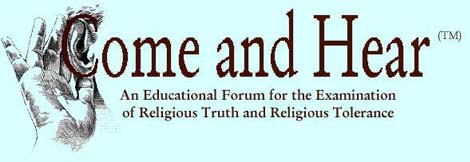Death Penalty and Talmud Law
3. Abuse of Context
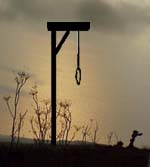
In 1999, the US Supreme Court accepted a death penalty brief based wholly on Talmud law. The advocates say the Talmud has a better way. Does it?
| Navigate This Site | |
 | |
| Home | |
| Valentine | |
| Dilling | |
| Talmud | |
| The Rabbis | |
| Supplement | |
| Glossary | |
| Download | |
| Admin | |
| | |
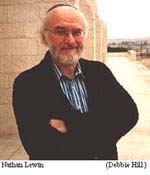
Nathan Lewin, a prominent Washington lawyer, is the attorney-of-record for an amicus curiae brief filed in December 1999 with the US Supreme Court on the Bryan v. Moore case. Lewin asserts that Florida's electric chair does not meet the standards of humanitarianism set by the ancient rabbis who wrote the Talmud. The brief characterizes a passage from the Talmud as follows:
"Although the Biblical text appears to contemplate frequent imposition of capital punishment, the weight of authority among rabbis of the Mishnaic period (1st-3rd centuries of the Common Era), who first committed to writing what had theretofore been transmitted from generation to generation as the Oral Law, clearly condemned frequent executions." The brief then cites Talmud Tractate Makkoth (7a) as follows:
The Sanhedrin that executes one person in seven years is called "murderous." Rabbi Elazar ben Azariah says that this extends to one execution in seventy years. Rabbi Tarfon and Rabbi Akiva say, "If we had been among the Sanhedrin, no one would ever have been executed." Rabbi Simon ben Gamliel responds, "Such an attitude would increase bloodshed in Israel." — Brief submitted by Nathan Lewin to the US Supreme Court (7)
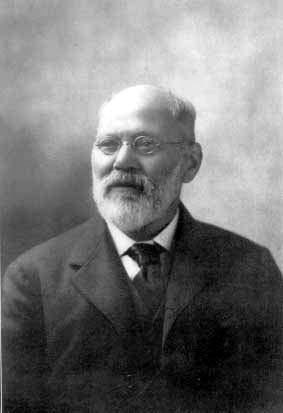
Rabbi Michael L. Rodkinson, author of History of the Talmud, writes on the subject of quotes and context: "The Talmud is free from the narrowness and bigotry with which it is usually charged, and if phrases used out of their context, and in a sense the very reverse from that which their author intended, are quoted against it, we may be sure that those phrases never existed in the original Talmud, but are the later additions of its enemies, and such as never studied it." (8)
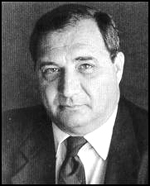
Abraham H. Foxman is the National Director of the Anti-Defamation League (ADL) and is known throughout the world as a leader in the fight against anti-Semitism, hatred, prejudice, bigotry and discrimination. Denouncing those who take Talmud passages out of context, the ADL writes:
"To make these passages serve their purposes, these polemicists frequently mistranslate them or cite them out of context (wholesale fabrication of passages is not unknown). They usually dismiss attempts to correct their misreadings as 'hairsplitting' or dishonest attempts to portray Judaism in a favorable light." — ADL position paper (12)
To see how the ADL quotes the Talmud out of context, see Do Not Censor the Talmud, Please: Appendix A, "ADL Takes Talmud Quotes Out of Context."
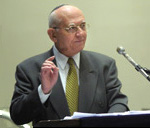
Rabbi Menachem Elon, Israel Supreme Court Justice (retired). Rabbi Elon wrote the (Israel court) opinion that formed the core of the argument used in the Brief submitted to the US Supreme Court by Nathan Lewin. He also reviewed and approved Lewin's brief after it was written. According to the brief, "Justice Elon is the world's foremost modern legal authority on … legal principles derived from traditional Jewish Law." (2)

You can help in the battle for Truth, Justice, and the American Way! Fight the forces of censorship and suppression of the Talmud, and bring about understanding between peoples of different faiths.
Download this site to your desktop computer.
Make CDs and distribute them to friends, neighbors, ministers, and community leaders.
Email your favorite essay to your email list.
Post your favorite essay to discussion forums.
Print your favorite essays and give them to those not on the Internet.
Flyers advertising Come-and-Hear.com can be distributed throughout your community.
 Genuine Come and Hear™ CDs do not contain executable programs. When making CDs, do not include any files that end in .exe, .com, .bat, .vbs, .doc, .pif, .sit, or .scr. The person receiving the CD should use his own browser to view the files. This helps to protect him from harmful programs and viruses.
Genuine Come and Hear™ CDs do not contain executable programs. When making CDs, do not include any files that end in .exe, .com, .bat, .vbs, .doc, .pif, .sit, or .scr. The person receiving the CD should use his own browser to view the files. This helps to protect him from harmful programs and viruses.
This is the third in a 4-part series on the Death Penalty in Talmud Law.
Rabbi Michael L. Rodkinson, translator of New Edition of the Babylonian Talmud (1898) quite properly objects to quotations from the Talmud being taken out of context.
The Talmud is free from the narrowness and bigotry with which it is usually charged, and if phrases used out of their context, and in a sense the very reverse from that which their author intended, are quoted against it, we may be sure that those phrases never existed in the original Talmud, but are the later additions of its enemies, and such as never studied it.
— Rabbi Michael Rodkinson (10)
In concert with Rabbi Rodkinson, let us raise the same objection: Quotations taken out of context often do not carry the intentions of the original authors, and may, inadvertently or otherwise, leave readers with false ideas.
In their Supreme Court brief submitted in December 1999 (Bryan v. Moore), Elon, Lewin, et al. quote Makkoth 7a thus:
The Sanhedrin that executes one person in seven years is called "murderous." Rabbi Elazar ben Azariah says that this extends to one execution in seventy years. Rabbi Tarfon and Rabbi Akiva say, "If we had been among the Sanhedrin, no one would ever have been executed." Rabbi Simon ben Gamliel responds, "Such an attitude would increase bloodshed in Israel."
— National Jewish COLPA/IAJLJ (2)
After quoting this, Elon, Lewin, et al. comment:
This exchange among rabbis living in the first and second centuries reflects differences over the deterrent value of capital punishment that continue among legal scholars to this day. Some rabbis of the Mishnaic period (such as Rabbis Tarfon and Akiva) were unwilling to participate in a process that would take human life, while other rabbis (like Rabbi Simon ben Gamliel) believed that capital punishment had a deterrent effect that permitted it to be employed.
— National Jewish COLPA/IAJLJ (2)
Recall that Rabbi Judge Menachem Elon is former Deputy President of the Israeli Supreme Court and winner of the Israeli Prize, Israel's highest civilian honor. Prominent Orthodox Jewish advocate Nathan Lewin is the vice president of National Jewish Commission on Law and Public Affairs, president of the American Section of the International Association of Jewish Lawyers and Jurists, and has appeared before the Supreme Court 27 times. Trusting that Elon and Lewin that would not take a quotation from the Talmud out of context and thereby mislead the Court, we are led to believe that the rabbis of the Talmud fell into two camps:
- Those who were capital punishment abolitionists and,
- Those who reluctantly conceded to sparing use of capital punishment.
But when we recall Sanhedrin 45b, we are puzzled:
MISHNAH. ALL WHO ARE STONED ARE [AFTERWARDS] HANGED … BUT DID NOT SIMEON B. SHETAH HANG WOMEN AT ASHKELON? THEY RETORTED: [ON THAT OCCASION] HE HANGED EIGHTY WOMEN, NOTWITHSTANDING THAT TWO [MALEFACTORS] MUST NOT BE TRIED ON THE SAME DAY.
— Babylonian Talmud, Tractate Sanhedrin 45b
Soncino 1961 Edition, pages 299-300
In that passage, the rabbis do not comment upon, nor lament, the number of people executed. They are merely concerned that all the eighty women were tried on the same day. Presumably if the women were each tried on days 1 through 80 and then sequentially executed, the rabbis would not be moved to comment on the event. Given the great range of crimes for which the death penalty was prescribed, from rebelling as a youth to idolatry and adultery, how can we make sense of Makkoth 7a?
The answer is to look at Makkoth 7a in context. Let us look at the several sentences preceding those quoted by Elon and Lewin.
We are using the Soncino translation. The Tractate Makkoth is not available on Come-and-Hear (TM) website, but we have reproduced the relevant text for your convenience. We have underlined the sentences in the section that appears in the Elon-Lewin brief. The underlining is added for emphasis, and does not appear in the Soncino.
MISHNAH. IF ONE FLED AFTER HAVING BEEN CONVICTED AT A COURT AND AGAIN COMES UP BEFORE THE SAME COURT, THE [FIRST] JUDGMENT IS NOT SET ASIDE. WHEREVER TWO WITNESSES STAND UP AND DECLARE, 'WE TESTIFY THAT N. N. WAS TRIED AND CONVICTED AT THE COURT OF X AND THAT Y AND Z WERE THE WITNESSES IN THE CASE,' THE ACCUSED IS EXECUTED. A SANHEDRIN HAS JURISDICTION WITHIN THE LAND [OF PALESTINE] AND OUTSIDE IT. A SANHEDRIN THAT EFFECTS AN EXECUTION ONCE IN SEVEN YEARS, IS BRANDED A DESTRUCTIVE TRIBUNAL; R. ELIEZER B. AZARIAH SAYS: ONCE IN SEVENTY YEARS. R. TARFON AND R. AKIBA SAY: WERE WE MEMBERS OF A SANHEDRIN, NO PERSON WOULD EVER BE PUT TO DEATH. [THEREUPON] RABBAN SIMEON B. GAMALIEL REMARKED, [YEA] AND THEY WOULD ALSO MULTIPLY SHEDDERS OF BLOOD IN ISRAEL!
— Babylonian Talmud, Makkoth 7a, (3) (emphasis added)
Soncino 1961 Edition, page 35
The first part of this Mishnah — those sentences omitted by the Elon/Lewin team — are clearly halachah, or law. Those sentences lay down the law to be followed if a convicted man flees and is caught.
MISHNAH. … IF ONE FLED AFTER HAVING BEEN CONVICTED AT A COURT AND AGAIN COMES UP BEFORE THE SAME COURT, THE [FIRST] JUDGMENT IS NOT SET ASIDE. WHEREVER TWO WITNESSES STAND UP AND DECLARE, 'WE TESTIFY THAT N. N. WAS TRIED AND CONVICTED AT THE COURT OF X AND THAT Y AND Z WERE THE WITNESSES IN THE CASE,' THE ACCUSED IS EXECUTED.
— Babylonian Talmud, Makkoth 7a (3)
Soncino 1961 Edition, page 35
The next sentence defines the jurisdiction of a Sanhedrin:
MISHNAH. … A SANHEDRIN HAS JURISDICTION WITHIN THE LAND [OF PALESTINE] AND OUTSIDE IT.
— Babylonian Talmud, Makkoth 7a (3)
Soncino 1961 Edition, page 35
But the text underlined — the text quoted in the Elon-Lewin brief — appears to be commentary, not law. (That text is repeated here for ease of reference.)
MISHNAH. … A SANHEDRIN THAT EFFECTS AN EXECUTION ONCE IN SEVEN YEARS, IS BRANDED A DESTRUCTIVE TRIBUNAL; R. ELIEZER B. AZARIAH SAYS: ONCE IN SEVENTY YEARS. R. TARFON AND R. AKIBA SAY: WERE WE MEMBERS OF A SANHEDRIN, NO PERSON WOULD EVER BE PUT TO DEATH. [THEREUPON] RABBAN SIMEON B. GAMALIEL REMARKED, [YEA] AND THEY WOULD ALSO MULTIPLY SHEDDERS OF BLOOD IN ISRAEL!
— Babylonian Talmud, Makkoth 7a (3)
Soncino 1961 Edition, page 35
Now, let us look at the Gemara in which the rabbis discuss the underlined passage that Elon and Lewin quote. The words of the rabbis show us they are puzzled.
GEMARA. … A SANHEDRIN THAT EFFECTS AN EXECUTION ONCE IN SEVEN YEARS IS BRANDED A DESTRUCTIVE TRIBUNAL; R. ELIEZER B. AZARIAH SAYS, ONCE IN SEVENTY YEARS. The question was raised whether the comment [of R. Eleizer b. Azariah was a censure, namely] that even one death-sentence in seventy years branded the Sanhedrin as a destructive tribunal, or [a mere observation] that it ordinarily happened but once in seventy years? — it stands [undecided].
— Babylonian Talmud, Makkoth 7a (4)
Soncino 1961 Edition, page 36
Thus we see from the comments of the Sages that they don't understand the "once in seven years" or "once in seventy years" statements. They don't know if the comment was a censure or a statement of fact. They decide to move on.
The Gemara continues in this fashion:
GEMARA. … R. TARFON AND R. AKIBA SAY, WERE WE MEMBERS OF A SANHEDRIN, NO PERSON WOULD EVER BE PUT TO DEATH. How could they [being judges] give effect to that [policy]? Both R. Johanan and R. Eleazar suggested that the witnesses might be plied with [intimate] questions such as, 'Did you take note whether the victim was [perchance] suffering from some fatal affliction or was he perfectly healthy?' R. Ashi [enlarging upon this] said: And should the reply be, 'Perfectly healthy', they might further be embarrassed by asking, 'Maybe the sword only severed an internal lesion?'
— Babylonian Talmud, Makkoth 7a (5)
Soncino 1961 Edition, pages 36-37
Obviously these rabbis can't understand how other rabbis could avoid using capital punishment. H. M. Lazarus, the Talmud scholar who translated the Makkoth for Soncino, explains in a footnote:
- The judicial point involved in asking such intimate questions is this: that if the witnesses could not be absolutely certain on any material point in the evidence, they could not be expected to take a lead in the actual execution of the offender, as required by law. (Deut. XVII, 6-7.) Thus capital punishment fails.
— H. M. Lazarus, M.A. (6)
So we see that the rabbis are brainstorming a theoretical solution for a theoretical problem: how could there be such infrequent executions?
Thus when we see the preceding and following text, we understand that the Elon/Lewin quote was taken out of context. They use the quote to give the impression that "the weight of authority" among the rabbis "clearly condemned frequent executions." But against Makkoth 7a, we have seen dozens of other passages which show how readily the Sages prescribed execution both for individuals, groups, and even entire towns and cities; we have seen the vast number of offenses for which execution was prescribed, and descriptions giving the most intimate details about how it was to be carried out. There is little indication the rabbis were reluctant to follow their law.
So Makkoth 7a does not have the "weight of authority" that Elon and Lewin claim. They attribute significance to it that is not really there, even in the minds of men of the same culture, living relatively closely in time. But in a different culture, thousands of years later, Elon and Lewin present the quotation as if it were obvious to a child.
If individuals like Menachem Elon, and Nathan and Alyza Lewin, and organizations like the National Jewish Commission on Law and Public Affairs and the International Association of Jewish Lawyers and Jurists (American Section), deceive us about the Talmud's capital punish laws and practices, they frustrate Rabbi Jonathan Sacks' goal. We cannot learn about each other's faiths until we all come clean and tell the truth.
Thank you for your consideration of the above,
Carol A. Valentine, [email protected]
July 14, 2003 ( This article is on line at http://www.come-and-hear.com/editor/capunish_3.html )
|
Navigate Carol Valentine's America Under the Talmud — Will It Work for US? | |||||
 Howdy! |
 The Roadmap |
 Censorship |
 Death Penalty |
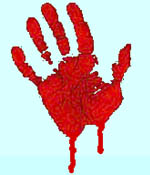 Blood Ritual |
 New America |
| Navigate This Site | |
 | |
| Home | |
| Valentine | |
| Dilling | |
| Talmud | |
| The Rabbis | |
| Supplement | |
| Glossary | |
| Download | |
| Admin | |
Endnotes:
- This and other Come and Hear™ Studies on Talmudic Judaism can be found online:
- http://www.come-and-hear.com/editor
- The Jewish Religion: Its Influence Today by Elizabeth Dilling, complete with all 300 exhibits, can be found online:
- http://www.come-and-hear.com/dilling
- Soncino Babylonian Talmud tractates, with Forewords, Introductions, Glossary, List of Abbreviations, and footnotes. Now you can study the Babylonian Talmud in full context and with the running commentary of the finest scholars of Judaism:
- Tractate Berakoth: http://www.come-and-hear.com/berakoth
- Tractate Shabbath: http://www.come-and-hear.com/shabbath
- Tractate Yebamoth: http://www.come-and-hear.com/yebamoth
- Tractate Kethuboth: http://www.come-and-hear.com/kethuboth
- Tractate Nedarim: http://www.come-and-hear.com/nedarim
- Tractate Nazir: http://www.come-and-hear.com/nazir
- Tractate Sotah: http://www.come-and-hear.com/sotah
- Tractate Gittin: http://www.come-and-hear.com/gittin
- Tractate Baba Kamma: http://www.come-and-hear.com/babakamma
- Tractate Baba Mezi'a: http://www.come-and-hear.com/babamezia
- Tractate Baba Bathra: http://www.come-and-hear.com/bababathra
- Tractate Sanhedrin: http://www.come-and-hear.com/sanhedrin
- Tractate Abodah Zarah: http://www.come-and-hear.com/zarah
- Tractate Horayoth: http://www.come-and-hear.com/horayoth
- Tractate Niddah: http://www.come-and-hear.com/niddah
- Tractate Tohoroth: http://www.come-and-hear.com/tohoroth
- Search the Talmud http://www.come-and-hear.com/tindex.html
- Download all the above resources for local study, CD, or mirror web site:
- http://www.come-and-hear.com/download
